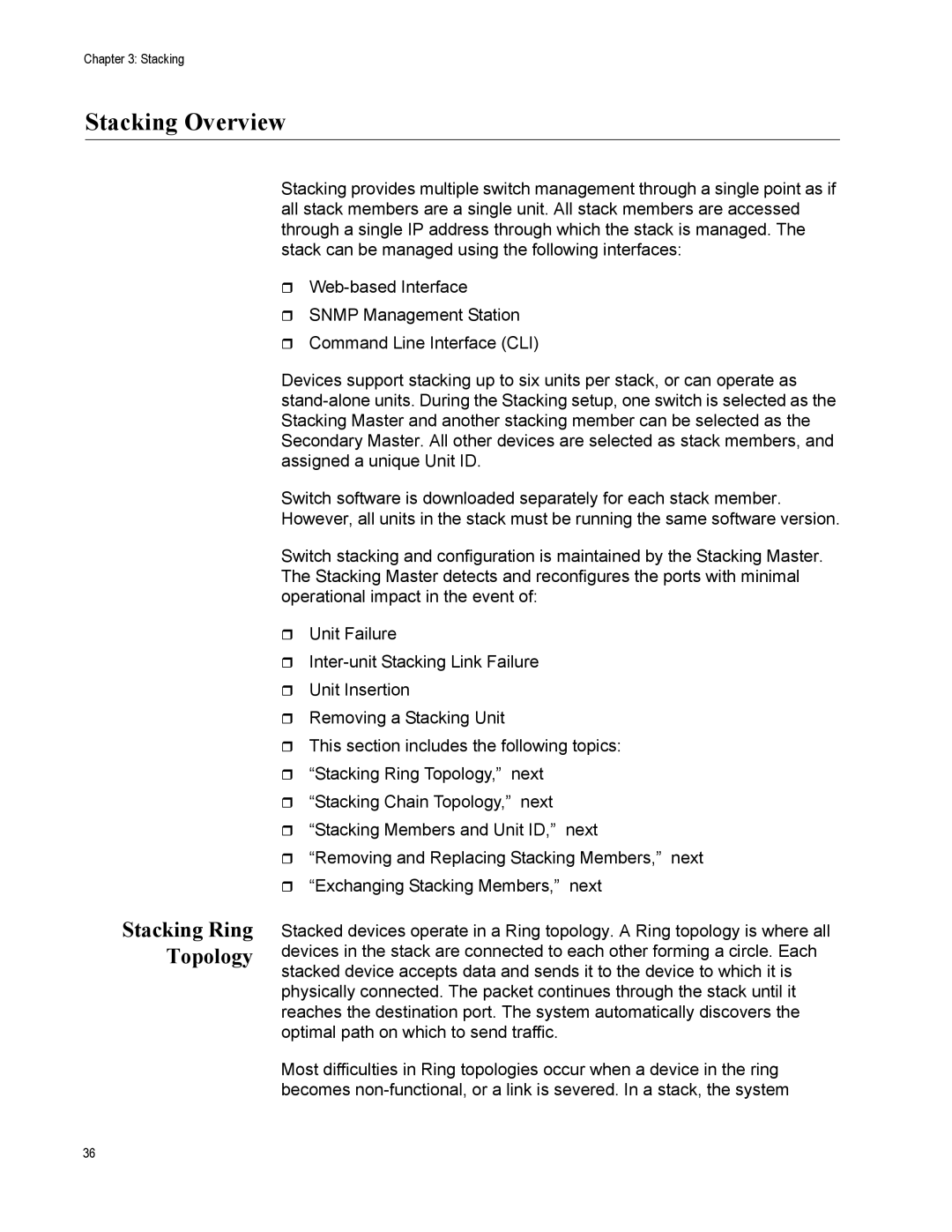Chapter 3: Stacking
Stacking Overview
Stacking Ring Topology
Stacking provides multiple switch management through a single point as if all stack members are a single unit. All stack members are accessed through a single IP address through which the stack is managed. The stack can be managed using the following interfaces:
SNMP Management Station
Command Line Interface (CLI)
Devices support stacking up to six units per stack, or can operate as
Switch software is downloaded separately for each stack member. However, all units in the stack must be running the same software version.
Switch stacking and configuration is maintained by the Stacking Master. The Stacking Master detects and reconfigures the ports with minimal operational impact in the event of:
Unit Failure
Unit Insertion
Removing a Stacking Unit
This section includes the following topics:
“Stacking Ring Topology,” next
“Stacking Chain Topology,” next
“Stacking Members and Unit ID,” next
“Removing and Replacing Stacking Members,” next
“Exchanging Stacking Members,” next
Stacked devices operate in a Ring topology. A Ring topology is where all devices in the stack are connected to each other forming a circle. Each stacked device accepts data and sends it to the device to which it is physically connected. The packet continues through the stack until it reaches the destination port. The system automatically discovers the optimal path on which to send traffic.
Most difficulties in Ring topologies occur when a device in the ring becomes
36
